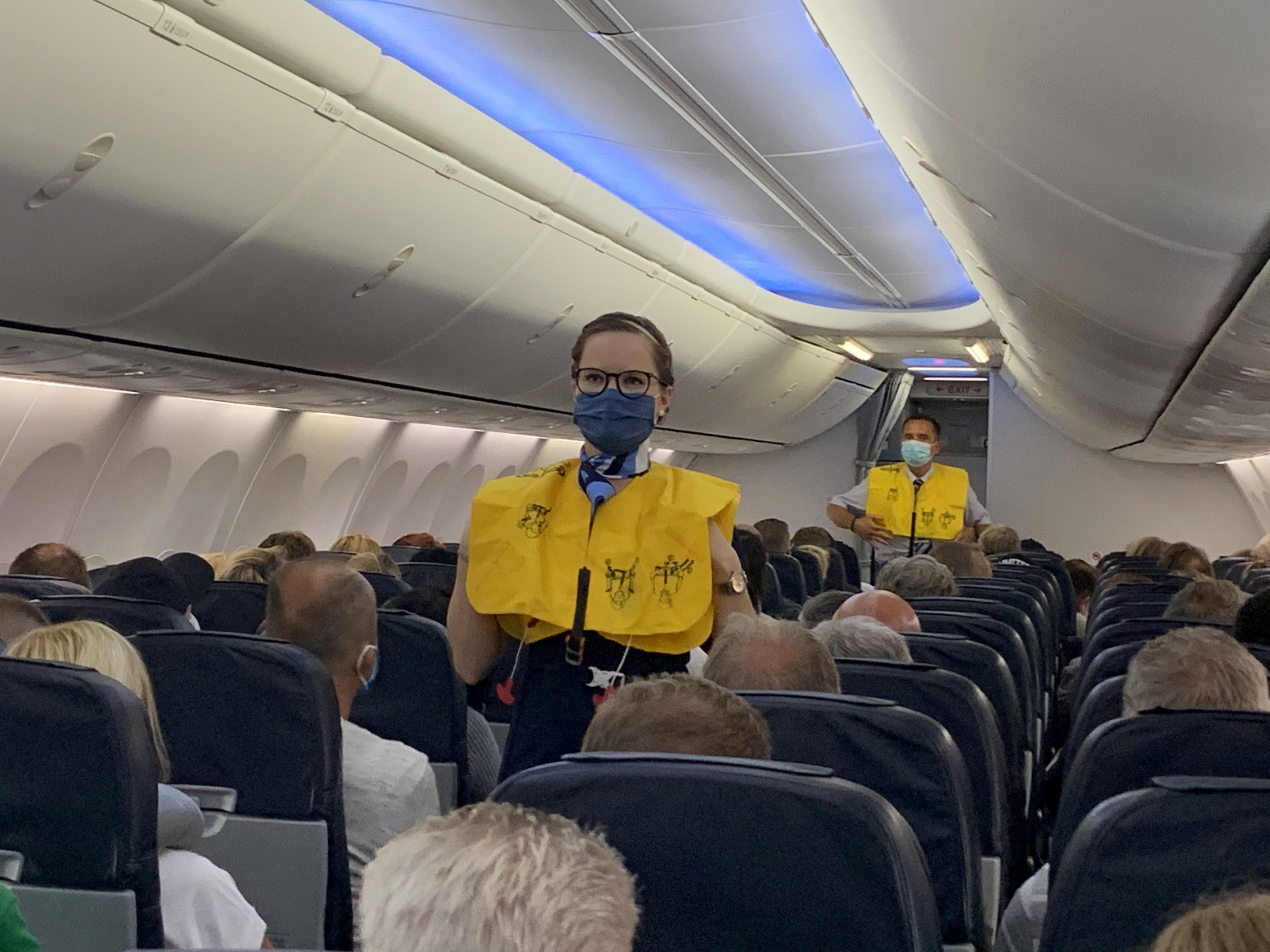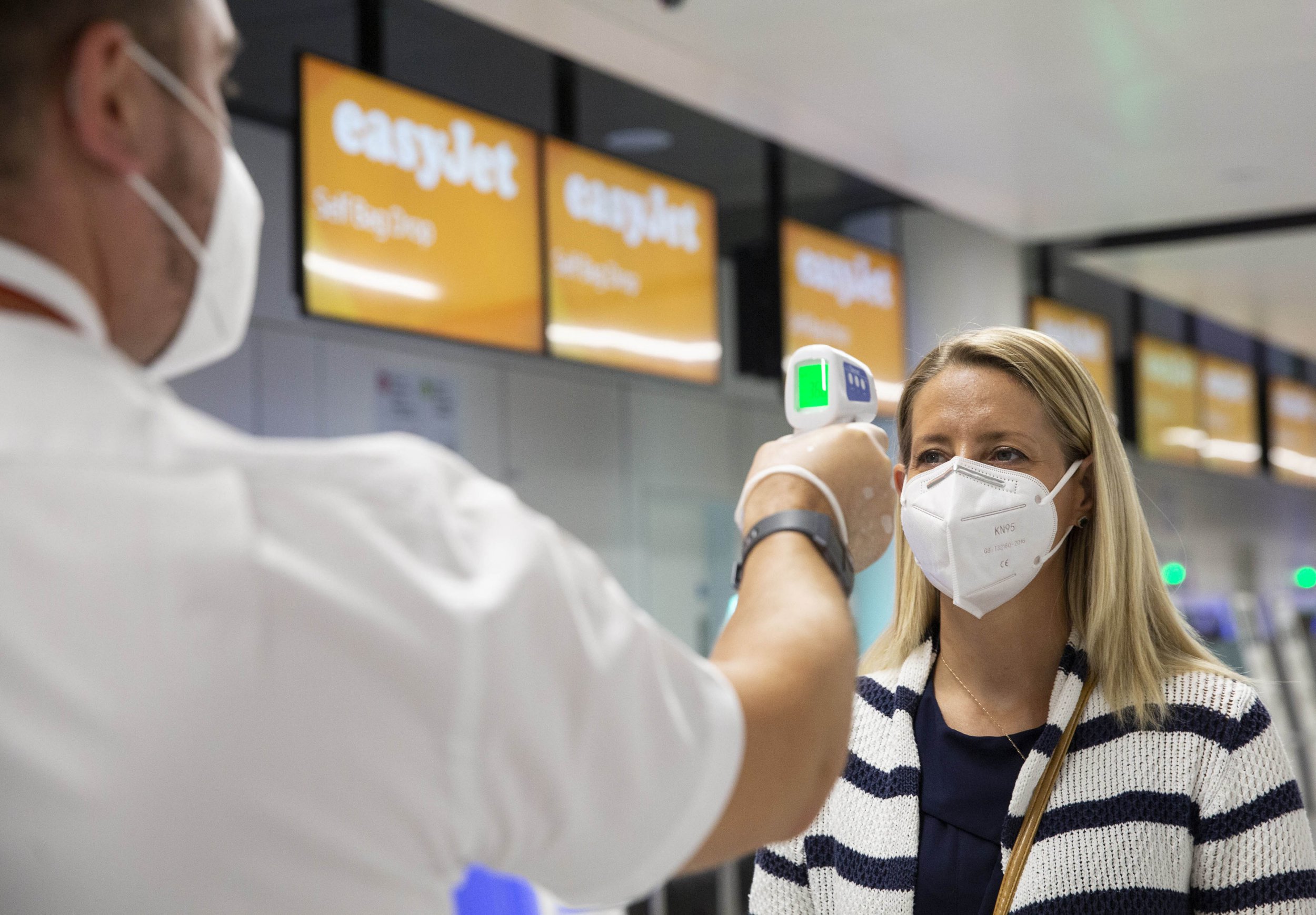The airline industry is one of the world’s fastest expanding businesses, each year (pre-pandemic, that is) transporting 4.3 billion passengers. With scale of that magnitude, welcome to a true margin business, where one extra lettuce leaf in your salad, multiplied across several billion meals, yields an enormous yearly cost.
Where does health fit into the airlines’ calculations? It’s a questionable cocktail at best. In fact, it may not be a surprise that many airlines define a turn-around cleaning procedure as: collect empty pretzel bags, water bottles, newspapers, magazines, and forgotten iPhones and ear buds during an average 30-minute turn-around-time from passengers disembarking to another round of passengers walking on. That’s 12 seconds per seat, if you’re travelling on a 156-seat Airbus 319.
Hold on just a second. Did someone say “cleaning”? In an industry where the addition or subtraction of a simple lettuce leaf rises to a level of genuine significance, how much would it cost to have an airliner sit on the Tarmac, with all those seats unoccupied and unsold, while a crew spends several hours doing a genuine deep-cleaning procedure?
The mirage of deep-cleaning
The fact is that cleaning, prior to the arrival of the coronavirus, had become a fast-vanishing mirage. Forget about disinfecting the armrests, cleaning the trays, sterilising the lavatories, washing the seat pockets, wiping the call-staff buttons, or vacuuming the seats and the aisles. It may happen … just not on your flight, or the one before, or any flight the day after. In fact, what industry experts call “deep cleaning” only happens every sixth week.

Since the first time we heard the word “coronavirus”, experts have been telling us to watch out for two different methods of transmission. First, they’ve told us that we spread it when we sneeze, cough, shout, sing, talk, and even simply breathe; coronavirus-infected droplets float from our mouths, travel in the air, and enter the mouths, nostrils, and even eyes of other people.
And, second, the virus lurks on various surfaces, waiting for us to touch them and transfer the virus to our faces.
Some people claim that the quality of airflow in an airliner differs substantially, depending on where in the plane you happen to be situated. They make the somewhat natural assumption that economy class passengers are left with the worst possible air quality imaginable.
Airs and graces
Well, experts at Protek (a health, safety and wellbeing programme for public spaces) and airline engineers tell me that first of all, airflow on all modern planes is equally distributed throughout the entire cabin, including lavatories and economy class (and no, I’m not suggesting a connection here). Airflow through the entire cabin is so intense that all the air is completely recirculated every three to five minutes. In addition, planes built after 1992 (90 percent of the operating fleet) are equipped with High-Efficiency Particulate Air filters, also called Hepa filters, the same filters as those used in hospital operating theatres.
So, what about surface-to-hand-to-mouth transmission? From the beginning of the pandemic, we’ve all taught ourselves the proper, 20-seconds-long method of washing our hands, and we’ve learned to turn doorknobs with our elbows. How risky do you rank the Covid-19 “danger zones” on a commercial airliner? Let’s start with the lavatory. Consider the handle on the inside and outside lavatory door, the tap, and the already mysteriously preheated toilet seat.
Or what about the touch screen and the monitor? And let’s not neglect that perennial hot-spot, the fold-down table lock. It’s situated just in front of your eyes and mouth (as it’s also been situated in front of the eyes and mouths of the previous 116 passengers who’ve been assigned the same seat over the past month).
The hidden dark spots
In fact, none of the above should worry us very much. Counter-intuitive as it may sound, the spots we perceive as most contaminated are typically the most hygienic, for the simple reason that we’re overly cautious in those areas. Typically, we should instead be watching for danger in spots where we’re distracted by our subconscious sense of security.
Announcements over the loudspeaker serve to camouflage one of those items behind a layer of perceived safety. I’m talking about the seatbelt buckle. Cleaning them never appears on any airline’s sanitation protocol.
Another “please-do-not-touch” spot is the top of each seat. How many hundreds of passengers have used them as navigation crutches, acting semi-blindfolded, stalked by bad luck unless they systematically place a hand on each and every seat-top the whole way back to Seat 57F?
And — you didn’t think about this, did you? — what about your socks? Twenty percent of passengers visit the lavatories without shoes. And then, back in their seats, how many of those shoe-less passengers massage their sore feet, contaminate their fingers, and, sometime in the next few 30 minutes, absent-mindedly touch their faces, their armrests, the fold-down tray, and the window shade? The risk of catching Covid-19 on a flight is currently around one in a thousand, or 0.1 percent. Stated another way: You’re at no greater risk of contracting Covid-19 on a commercial airliner, and dying from it, than you are of suffering a fatal accident while driving your own car.
Needless to say, few people (if any at all) are able to achieve perfect safety; they can’t sustain a complete adoption of all safety routines over an extended period of time, because our surroundings don’t remain the same. Because perfection isn’t possible, your realistic goal is relatively simple: determine how safe you’d like to be, assess what that will require, make a list of the changes you’ll need to make, and always follow them. The list below, while far from exhaustive, is realistic.

Pre-flight check-list
- Carry two bottles of hand sanitiser, each smaller than 100ml, enough face coverings for the entire journey, phone sanitising and luggage wipes.
- Check the airport and airline for minimum check-in times. Some airports require additional document checks (and sometimes health checks, too).
- Double-check that you show no sign of fever.
- If you’ve had any (very) recent Covid-19 health check, bring the documentation with you.
- Pack all your baggage in a carry-on suitcase, avoiding the risk of acquiring microbes on checked-in luggage.
- Check in prior to leaving home. If possible, check in your luggage too.
- Try to secure a window seat in the last row.
- If you are to be patted down in screening, ask the officer to put on new gloves before doing so (recommended).
- Stay away from the toilets, but if you absolutely have to go, wear a mask, close the toilet lid (if there is one) before flushing, and wash your hands with soap for 20 seconds.
- Don’t view the airport as a theme park or shopping centre, as you may have done in the past. Times have changed.
- Try to board last, not first.
- Do a sanitary makeover on the most essential touch points at your seat: seatbelt buckle, armrest (top and underneath), tray table lock, actual tray table.
- If there is a touch screen, clean it.
- Avoid touching or reaching into the seat pocket.
- Run intensive air flow on your head during the entire flight.
This is an edited extract from Martin Lindstrom’s new ebook Travel Truth and Lies Unmasked, available as a free download.

Marcus Rashford's reputation is in tatters. His silence is shocking